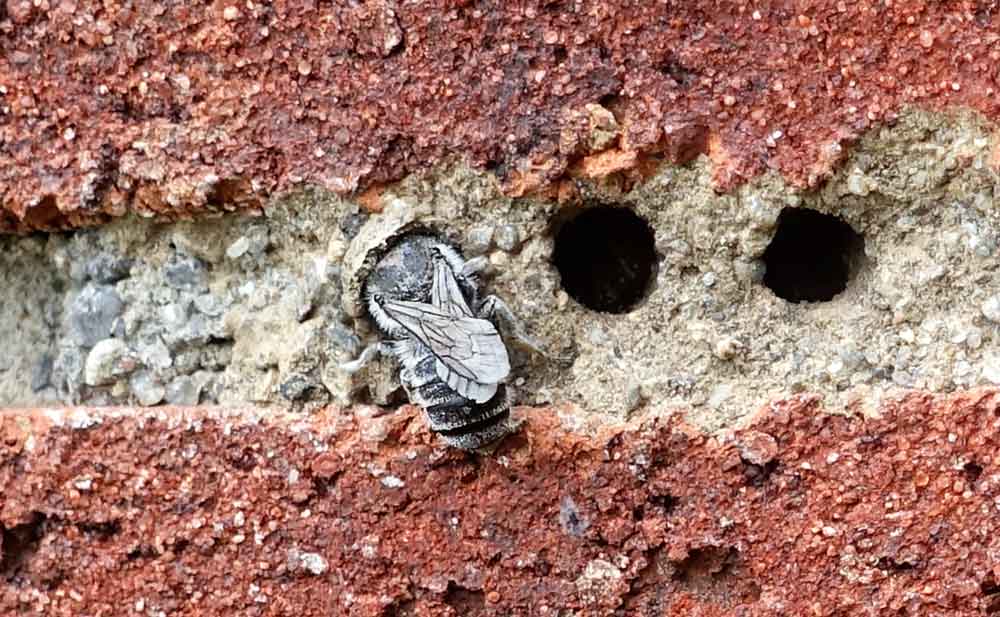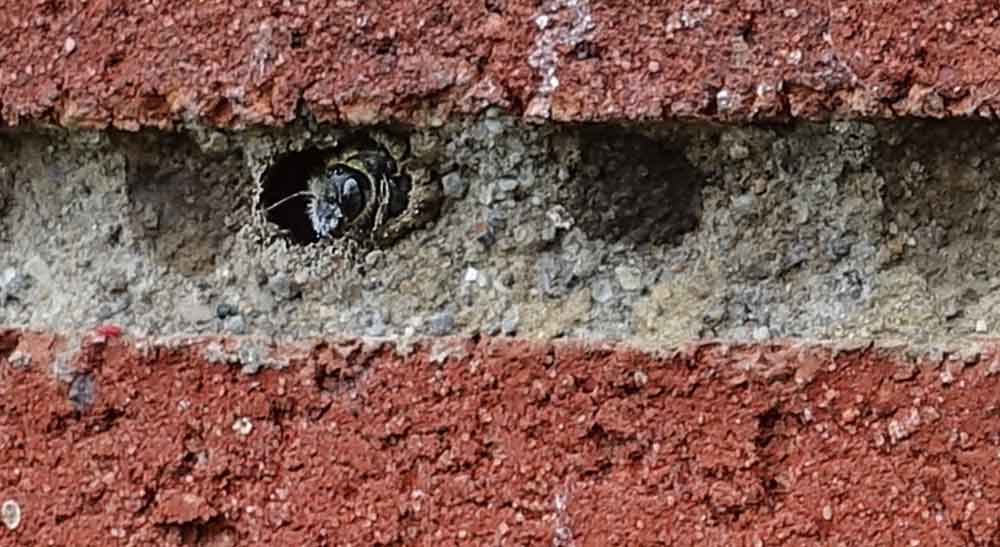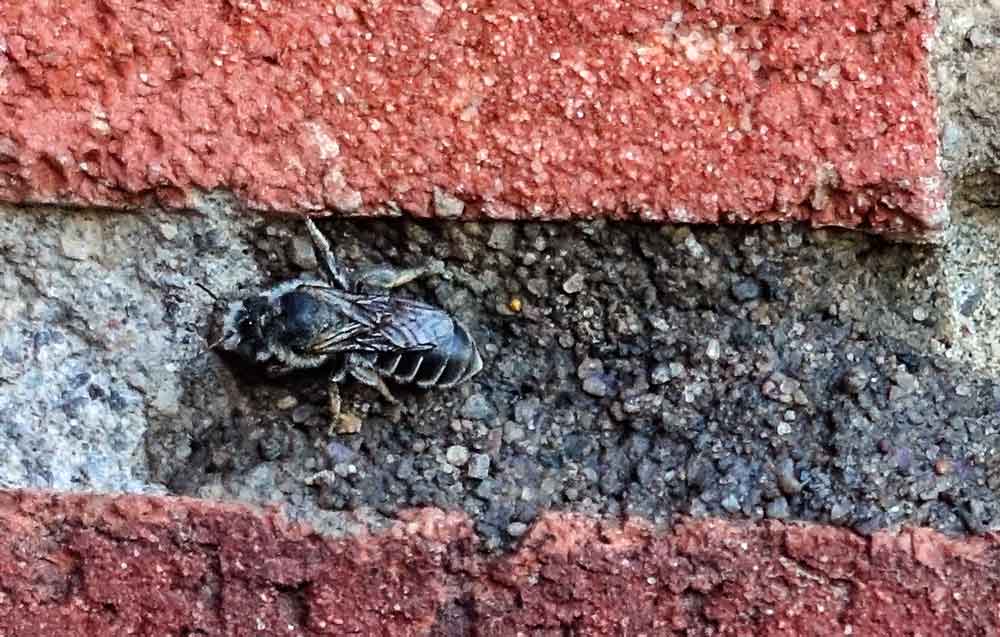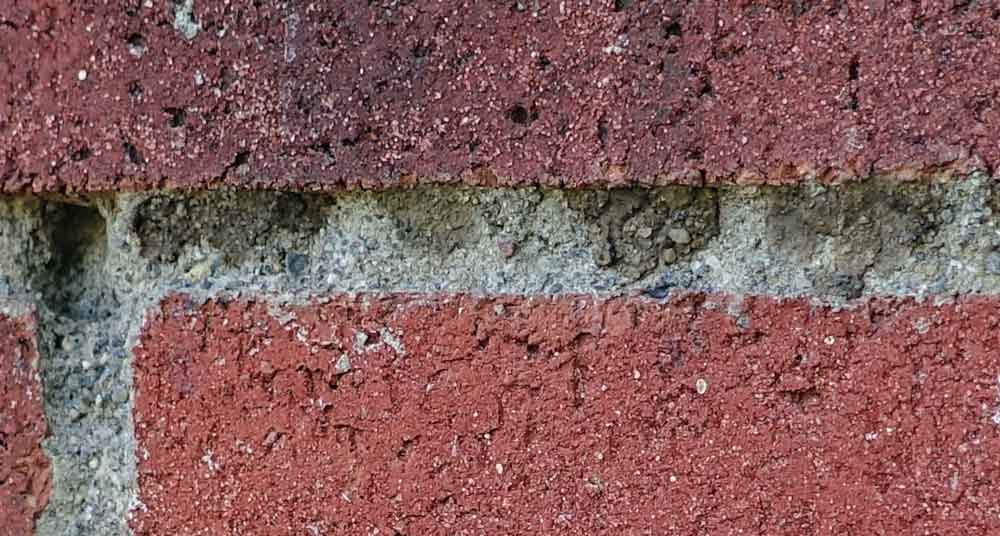
Female bee entering nest hole to deposit pollen as food for larvae when they hatch.
This spring I noticed some dull-coloured, inconspicuous bee-looking insects working in the masonry grooves between the chimney bricks. On closer inspection, they were filling the grooves with what looked like mortar and flying back and forth to holes in it. Puzzled and fearing for my bricks, I had to look them up. I knew honey bees and bumble bees but this was my first encounter with mason bees which had chosen my chimney as their next project.

Bee ready to lay eggs on the pollen she has stored in the nest.
I learned that mason bees are our pals, considered beneficial and highly desirable as pollinators. Just ten mason bees can pollinate a whole fruit tree. They are only active from four to eight weeks at blossom time. Males emerge, mate with females then, poor fellows, fall dead. Females build solitary nests in suitable holes using mud with a high clay content. They fill the nest hole with pollen, lay eggs upon it, and seal up the hole with a concrete-like plug. Then they, too, die. No wonder I had never noticed them before.

Bee sealing her nest hole with concrete-like mud.
The eggs hatch into larvae which feed until the pollen is gone, then spin a cocoon and wait through the winter months to emerge as new bees in the spring for their short, busy life outside. Males have no stinger. Females only sting if strongly provoked so they are considered safe for children. Honey bee larvae breathe through microscopic openings in their wax seal. I assume mason bees do the same through their clay walls.

A row of sealed nests from which new bees will emerge in the following spring.
There is a whole thriving subculture of bee enthusiasts who raise mason bees for fun and gardening. You can order mason bee cocoons, mason bee houses, mason bee books, get instructions on how to build your own mason bee houses, collect suitable nest materials, join mason bee groups, learn to deal with pollen mites and much, more. Who knew!
I bought a couple mason bee houses and every year a few actively use them. Insect houses have become very popular in recent years as we become more in touch with Nature, built to accommodate a variety of beneficial insects. I discovered that the hollow stems of invasive Phragmites work very well as tubes to house their eggs.